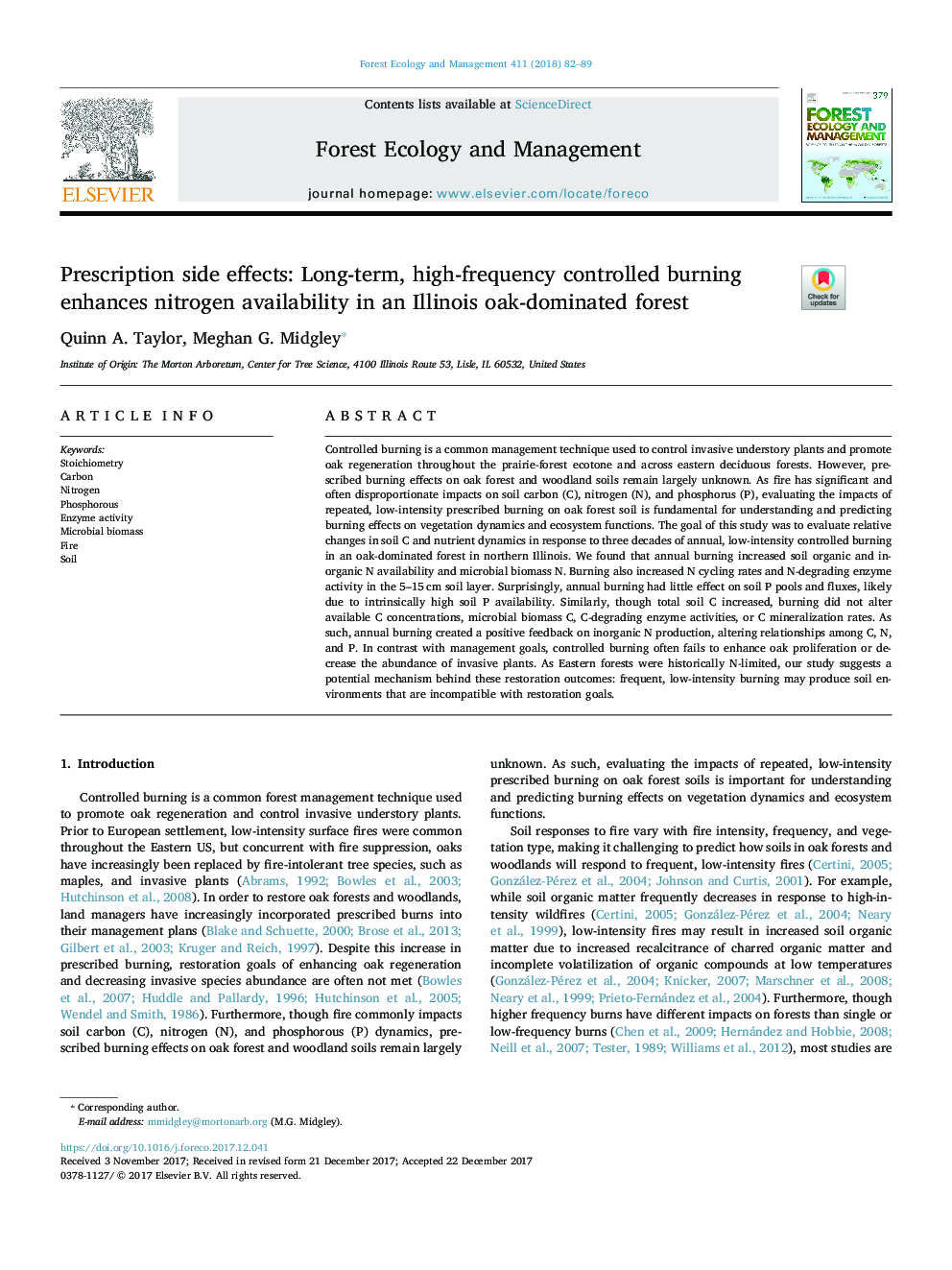| کد مقاله | کد نشریه | سال انتشار | مقاله انگلیسی | نسخه تمام متن |
|---|---|---|---|---|
| 6541821 | 1421347 | 2018 | 8 صفحه PDF | دانلود رایگان |
عنوان انگلیسی مقاله ISI
Prescription side effects: Long-term, high-frequency controlled burning enhances nitrogen availability in an Illinois oak-dominated forest
ترجمه فارسی عنوان
عوارض جانبی نسخه: طولانی مدت، سوزش کنترل شده با فرکانس بالا، افزایش دسترسی به نیتروژن در جنگل های بلوط ایلینویز
دانلود مقاله + سفارش ترجمه
دانلود مقاله ISI انگلیسی
رایگان برای ایرانیان
کلمات کلیدی
استوکیومتری، کربن، نیتروژن، فسفر، فعالیت آنزیم، بیوماس میکروبی، آتش، خاک
موضوعات مرتبط
علوم زیستی و بیوفناوری
علوم کشاورزی و بیولوژیک
بوم شناسی، تکامل، رفتار و سامانه شناسی
چکیده انگلیسی
Controlled burning is a common management technique used to control invasive understory plants and promote oak regeneration throughout the prairie-forest ecotone and across eastern deciduous forests. However, prescribed burning effects on oak forest and woodland soils remain largely unknown. As fire has significant and often disproportionate impacts on soil carbon (C), nitrogen (N), and phosphorus (P), evaluating the impacts of repeated, low-intensity prescribed burning on oak forest soil is fundamental for understanding and predicting burning effects on vegetation dynamics and ecosystem functions. The goal of this study was to evaluate relative changes in soil C and nutrient dynamics in response to three decades of annual, low-intensity controlled burning in an oak-dominated forest in northern Illinois. We found that annual burning increased soil organic and inorganic N availability and microbial biomass N. Burning also increased N cycling rates and N-degrading enzyme activity in the 5-15â¯cm soil layer. Surprisingly, annual burning had little effect on soil P pools and fluxes, likely due to intrinsically high soil P availability. Similarly, though total soil C increased, burning did not alter available C concentrations, microbial biomass C, C-degrading enzyme activities, or C mineralization rates. As such, annual burning created a positive feedback on inorganic N production, altering relationships among C, N, and P. In contrast with management goals, controlled burning often fails to enhance oak proliferation or decrease the abundance of invasive plants. As Eastern forests were historically N-limited, our study suggests a potential mechanism behind these restoration outcomes: frequent, low-intensity burning may produce soil environments that are incompatible with restoration goals.
ناشر
Database: Elsevier - ScienceDirect (ساینس دایرکت)
Journal: Forest Ecology and Management - Volume 411, 1 March 2018, Pages 82-89
Journal: Forest Ecology and Management - Volume 411, 1 March 2018, Pages 82-89
نویسندگان
Quinn A. Taylor, Meghan G. Midgley,
